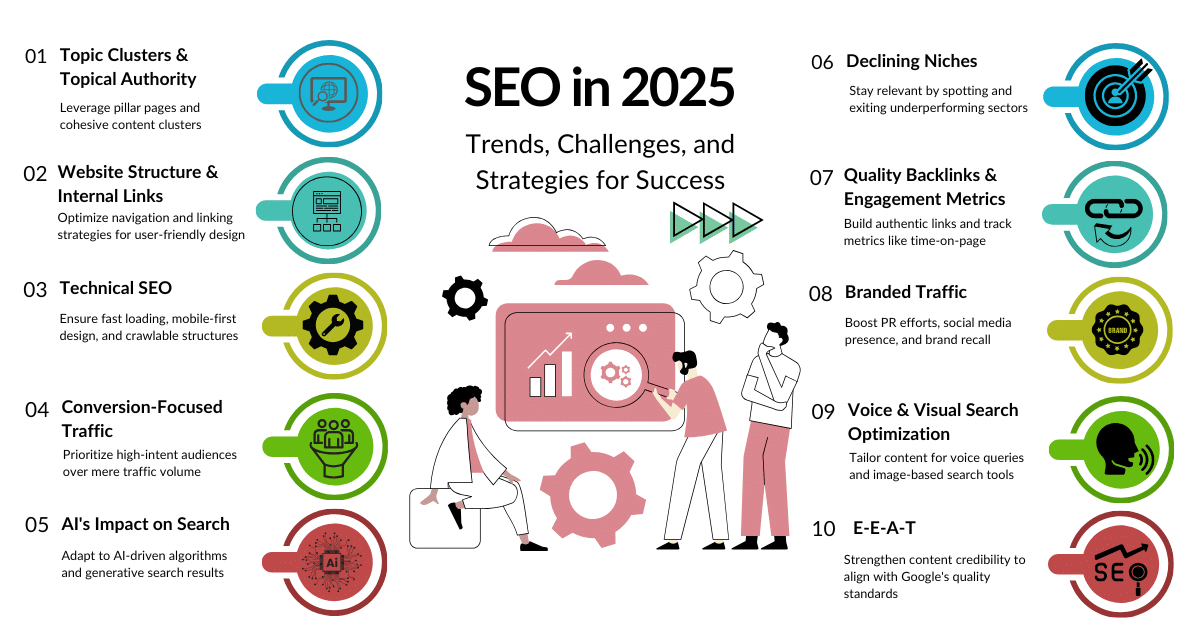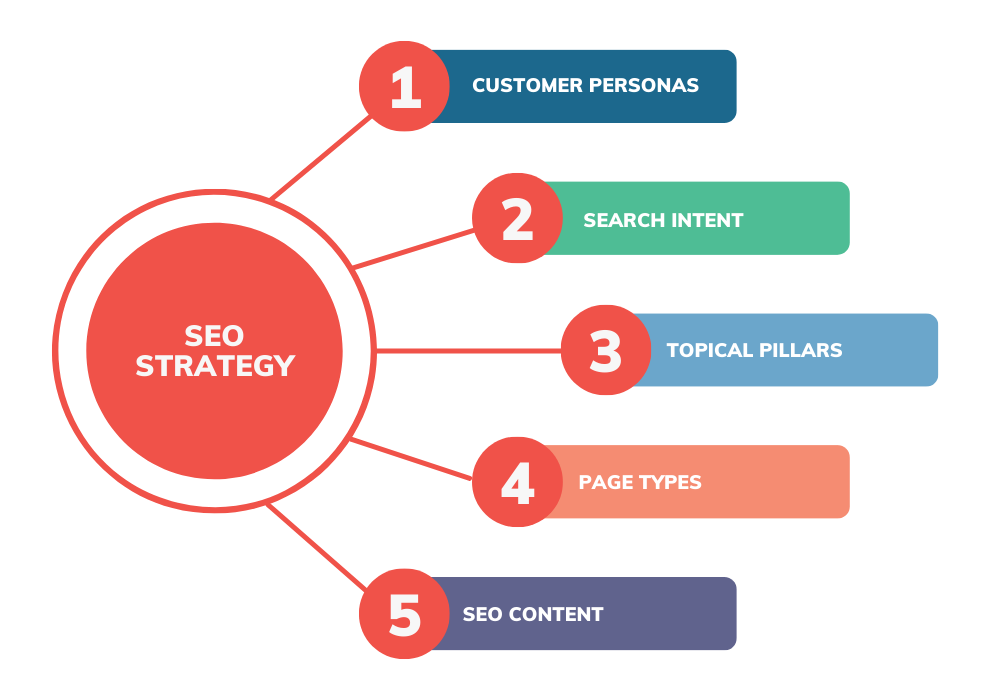🔹 Starting
Search Engine Optimization (SEO) is the process of making it easier for search engines like Google, Bing, and Yahoo to find a website.
The main goal of SEO is to generate more organic (unpaid) traffic by modifying some on-page and off-page factors to match how search engines rank sites.
The concept of SEO originated in the early 1990s, shortly after the emergence of initial search engines such as AltaVista and Yahoo.
The new ranking algorithm that Google used when it came out in 1998 was based on links and relevance. This was the beginning of modern SEO techniques.
A lot has changed in SEO since then. In the past, it was just about putting keywords on pages. Now, though, it’s a well-planned process that takes into account things like content quality, user experience, technical optimization, and trust signals.
🔹 A Step-by-Step Guide to Using SEO
SEO is not something you do once; it’s a process that takes time and effort to research, implement, monitor, and improve.
Below is a step-by-step breakdown of how SEO works:
Step 1: Keyword Research
This is the most critical aspect of any SEO plan.
You find the words that people use to search for information about your company.
You may find keywords that work with tools like Ahrefs, SEMrush, and Google Keyword Planner:
- Many people look for it.
- Not many other people are doing it.
- Critical.
👉 Example: You might wish to use keywords like “best running shoes 2025” or “men’s sports sneakers” if you sell shoes online.
Step 2: On-page SEO
In this phase, you’ll improve some aspects of your website so that search engines can easily read your content.
Key tasks:
- Putting target keywords in the URL, title tag, meta description, and headers (H1–H6)
- Creating content that is excellent for SEO and answers people’s questions
- Adding alt text to pictures and internal links
- Making sure the design is mobile-friendly and loads quickly
👉 On-page SEO helps both Google and humans understand what your page is about.
Step 3: SEO for the IT Side (Technical SEO)
This step makes sure that search engines can simply find and index your site.
Crucial technical SEO tasks include:
- Sending in an XML sitemap
- Using HTTPS (SSL certificates)
- Fixing broken links and duplicate content
- Using Google PageSpeed Insights and similar tools to make your site faster
- Applying structured data (schema markup)
👉 When a site is technically optimized, it ensures Google can find your material without complications.
Step 4: Off-Page SEO
Off-page SEO is the act of doing things outside of your website to make it more trustworthy and authoritative.
Key activities:
- Writing guest posts
- Promoting on social media.
- Joining forums
- Getting in touch with influencers
👉 Google sees links from important websites to your content as a vote of trust.
Step 5: Make the Content Better
“Content is king”—a timeless SEO rule.
Your content must be original, helpful, and keyword-rich.
Best practices:
- Make sure your articles are longer than 1000 words.
- Include LSI (Latent Semantic Indexing) keywords and FAQs
- Update old articles regularly
- Add videos, infographics, or images that are engaging
Good content builds authority and keeps readers longer on your site—a strong ranking factor.
Step 6: Local SEO (If Your Business Is in One Place)
Local SEO makes it easier for people in your area to find your business on Google Maps and in local search results.
Steps include:
- Creating and improving your Google Business Profile
- Getting reviews and ratings from local customers
- Using local keywords like “cleaning service in Dubai Marina”
👉 Perfect for service-based or regional businesses.
Step 7: Watch and Study Your SEO.
The last step is to monitor performance and make modifications as needed.
Recommended tools:
- Google Analytics – for traffic and actions
- Google Search Console – for clicks, impressions, and index coverage.
- Ahrefs/SEMrush—for backlinks and keyword rankings.
Track regularly:
- Organic traffic growth
- Bounce rate
- Conversion rate
- Keyword positions
👉 Continuous improvement based on data is the key to SEO success.
🔹 Different Types of SEO
There are three main types of SEO:
- White-Hat SEO:
White-Hat SEO involves the use of ethical, Google-approved methods such as quality content and relevant backlinks. - Black-Hat SEO:
Unethical, short-term tactics like keyword stuffing or spam links. - Grey-Hat SEO:
A risky mix of both white and black techniques.
Modern SEO always recommends white-hat SEO for sustainable results.
🔹 The Importance of SEO
- Increases website traffic and visibility
- Builds brand trust and authority
- Improves user experience (UX)
- Offers better ROI than paid advertising
- Strengthens long-term online presence
According to BrightEdge (2024), over 68% of online experiences begin with a search engine, and SEO drives 1,000% more visitors than social media.
🔹 Final Thoughts
SEO isn’t just a marketing trick—it’s a digital survival strategy.
In a world where billions of websites compete for attention, SEO is what helps your business stand out.
It’s not about tricking Google—it’s about understanding what users want and giving it to them better than your competitors.




